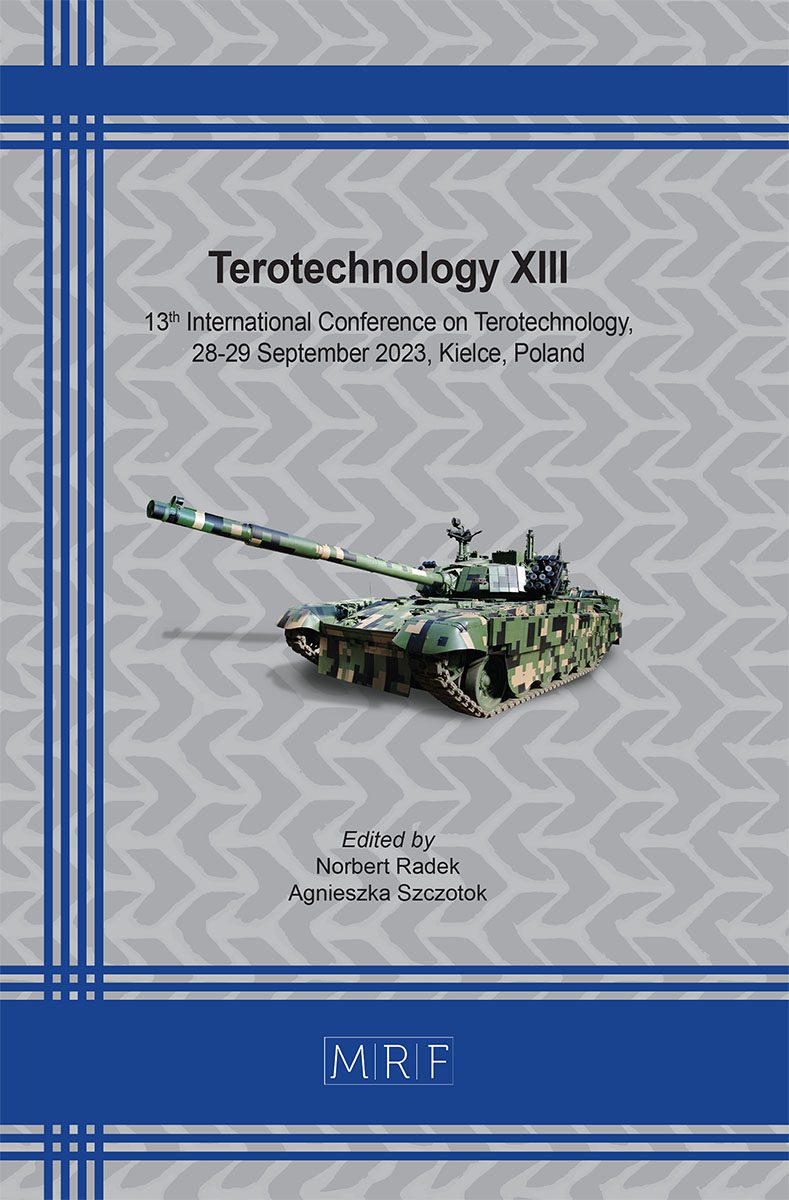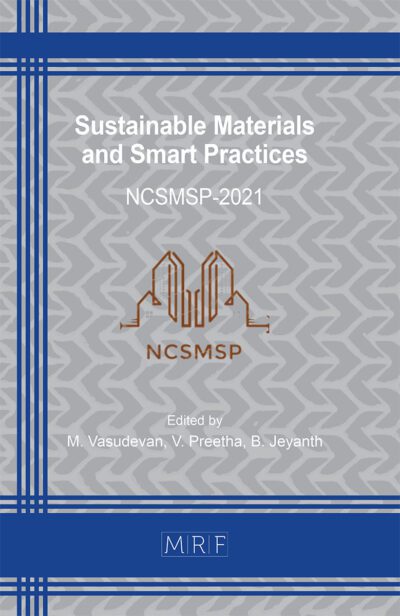–
Some Remarks on Large-Scale Biomass Co-Combustion
KOBYŁECKI Rafał, DUDEK Agata, ZARZYCKI Robert, WICHLIŃSKI Michał
Abstract. The investigations were conducted at the CFB boiler and focused on the assessment of the effect of agrobiomass co-combustion on the quantity and nature of deposits formed on heat exchanger tube surfaces and the determination of the corrosion kinetics. Industrial trials included a reference test, burning coal only, and two co-combustion tests (short- and long-term). The analysis revealed that the co-combustion of agrobiomass resulted in increased deposit formation, and the majority of the solids accumulated at the tube surfaces were directly exposed to the hot flue gases. These deposits revealed dense and hard structures, and their removal was difficult. On the contrary, the deposits formed at the aerodynamic shadow zone exhibited a loose consistency and could be removed relatively easily. The results also indicated that the rate of corrosion of the steel samples was quite similar regardless of the fuel type but was significantly higher for shorter exposure times. Despite that, the results indicated that co-combustion of up to 15 wt% of agrobiomass with coal did not pose a serious threat to the boiler heat transfer surfaces due to the protective effect of the deposits that limited the diffusion of corrosive agents from the flue gas to the steel tube surface.
Keywords
Biomass, Combustion, CFB Boiler, Fouling, Corrosion
Published online 10/20/2024, 9 pages
Copyright © 2024 by the author(s)
Published under license by Materials Research Forum LLC., Millersville PA, USA
Citation: KOBYŁECKI Rafał, DUDEK Agata, ZARZYCKI Robert, WICHLIŃSKI Michał, Some Remarks on Large-Scale Biomass Co-Combustion, Materials Research Proceedings, Vol. 45, pp 146-154, 2024
DOI: https://doi.org/10.21741/9781644903315-18
The article was published as article 18 of the book Terotechnology XIII
![]() Content from this work may be used under the terms of the Creative Commons Attribution 3.0 license. Any further distribution of this work must maintain attribution to the author(s) and the title of the work, journal citation and DOI.
Content from this work may be used under the terms of the Creative Commons Attribution 3.0 license. Any further distribution of this work must maintain attribution to the author(s) and the title of the work, journal citation and DOI.
References
[1] S. Gradziel, K. Majewski, Experimental determination of the friction factor in a tube with internal helical ribs, Energies 12 (2019) art.257. https://doi.org/10.3390/en12020257
[2] W. Zima, S. Grądziel and A. Cebula, Modelling of heat and flow phenomena occuring in waterwall tubes of boilers for supercritical steam parameters, Archives of Thermodynamics 31 (2010) 19-36. https://doi.org/10.2478/v10173-010-0012-y
[3] S. Grądziel, K. Majewski, Simulation of Thermal and Flow Phenomena in Smooth and Internally Rifled Tubes, Heat Transfer Engineering 39 (2018) 1243-1250. https://doi.org/10.1080/01457632.2017.1363633
[4] I. Wardach-Święcicka, S. Polesek-Karczewska and D. Kardaś, Biomass combustion in the helically coiled domestic boiler combined with the equilibrium/chemical kinetics CFD approach. Appl. Mech. 4 (2023) 779-802. https://doi.org/10.3390/applmech4020040.
[5] Ł.J. Orman, N. Radek, J. Pietraszek and D. Gontarski, Discussion of the heat flux calculation method during pool boiling on meshed heaters, System Safety: Human – Technical Facility – Environment 2 (2020) 247-252. https://doi.org/10.2478/czoto-2020-0030
[6] Ł.J. Orman, N. Radek, J. Pietraszek, J. Wojtkowiak and M. Szczepaniak, Laser Treatment of Surfaces for Pool Boiling Heat Transfer Enhancement, Materials 16 (2023) art. 1365. https://doi.org/10.3390/ma16041365
[7] Ł.J. Orman, N. Radek, S. Honus and J. Pietraszek, Application of laser treatment technology for boiling heat transfer augmentation, Prod. Eng. Arch. 30 (2024) 259-265. https://doi.org/10.30657/pea.2024.30.25
[8] B. Hernik, J. Wnorowska, Numerical research on combustion processes and deposit formation on the deposition probe in the pulverized drop chamber, Renewable Energy 187 (2022) 1-13. https://doi.org/10.1016/j.renene.2022.01.057
[9] S. Polesek-Karczewska, T. Turzyński, D. Kardaś and Ł. Heda, Front velocity in the combustion of blends of poultry litter with straw. Fuel Process Technol. 176 (2018) 307-315. https://doi.org/10.1016/j.fuproc.2018.03.040
[10] M. Opydo, A. Dudek and R. Kobyłecki, Characteristics of solids accumulation on steel samples during co-combustion of biomass and coal in a CFB boiler, Biomass and Bioenergy 120 (2019) 291-300. https://doi.org/10.1016/j.biombioe.2018.11.027
[11] B. Hernik, Numerical Research of the Modification of the Combustion System in the OP 650 Boiler. Energies 13 (2020) art.725. https://doi.org/10.3390/en13030725
[12] S. Michna, N. Naprstkova and D. Klimecka-Tatar, Research the causes of surface stains after eloxal coating for the profile from the AlMgSi alloy using substructural analysis, Manuf. Technol. 15 (2015) 620-624.
[13] T. Lipiński, Investigation of corrosion rate of X55CrMo14 stainless steel at 65% nitrate acid at 348 K, Prod. Eng. Arch. 27 (2021) 108-111. https://doi.org/10.30657/pea.2021.27.13
[14] J. Fabiś-Domagała, H. Momeni, M. Domagała and G. Filo, Matrix fmea analysis as a preventive method for quality design of hydraulic components, System Safety: Human – Technical Facility – Environment 1 (2019) 684-691. https://doi.org/10.2478/czoto-2019-0087
[15] J. Fabis-Domagala, M. Domagala, A Concept of Risk Prioritization in FMEA of Fluid Power Components, Energies 15 (2022) art. 6180. https://doi.org/10.3390/en15176180
[16] J. Pietraszek, N. Radek and A.V. Goroshko, Challenges for the DOE methodology related to the introduction of Industry 4.0, Prod. Eng. Arch. 26 (2020) 190-194. https://doi.org/10.30657/pea.2020.26.33
[17] K. Knop, Analysing the machines working time utilization for improvement purposes, Prod. Eng. Arch. 27 (2021) 137-147. https://doi.org/10.30657/pea.2021.27.18
[18] N. Naprstkova, J. Cais and M. Ingaldi, Modification of AlSi9CuMnNi alloy by antimony and heat treatment and their influence on tool wear after turning, Manuf. Technol. 16 (2016) 209-214.
[19] A. Bartkowska, D. Bartkowski, R. Swadźba, D. Przestacki and A. Miklaszewski, Microstructure, chemical composition, wear, and corrosion resistance of FeB–Fe2B–Fe3B surface layers produced on Vanadis-6 steel using CO2 laser, International Journal of Advanced Manuf. Technol. 95 (2018) 1763-1776. https://doi.org/10.1007/s00170-017-1304-z
[20] E. Kozień, M.S. Kozień, Ex-ante risk estimation in the production project, System Safety: Human – Technical Facility – Environment 1 (2019) 708-715. https://doi.org/10.2478/czoto-2019-0090
[21] E. Kozien, M.S. Kozien, The Ex-ante risk assessment in the project in interval analysis description, Mater. Res. Proc. 17 (2020) 31-35. https://doi.org/10.21741/9781644901038-5
[22] N. Radek, J. Pietraszek and A. Goroshko, The impact of laser welding parameters on the mechanical properties of the weld, AIP Conf. Proc. 2017 (2018) art. 20025. https://doi.org/10.1063/1.5056288
[23] E. Kozień, Assessment of technical risk in maintenance and improvement of a manufacturing process, Open Eng. 10 (2020) 658-664. https://doi.org/10.1515/eng-2020-0047
[24] P.J. Romanowicz, D. Smolarski and M.S. Kozién, Using the Effect of Compression Stress in Fatigue Analysis of the Roller Bearing for Bimodal Stress Histories, Materials 15 (2022) art. 196. https://doi.org/10.3390/ma15010196
[25] T. Lipiński, Influence of the Scatter Index of Non-Metallic Inclusions in Structural Steel on the Fatigue Resistance Coefficient, Materials 16 (2023) art. 2758. https://doi.org/10.3390/ma16072758
[26] T. Lipiński, The Role of the Distance between Fine Non-Metallic Oxide Inclusions on the Fatigue Strength of Low-Carbon Steel, Appl. Sci. 13 (2023) art. 8354. https://doi.org/10.3390/app13148354
[27] K. Knop, R. Ulewicz, Assessment of technology, technological resources and quality in the manufacturing of timber products, Digitalisation and Circular Economy: Forestry and Forestry Based Industry Implications – Proc. Sci. Papers (2019) 251-256.
[28] T. Lipiński, Quality of Low-Carbon Steel as a Distribution of Pollution and Fatigue Strength Heated in Oxygen Converter, Coatings 13 (2023) art. 1275. https://doi.org/10.3390/coatings13071275
[29] D. Bartkowski, A. Bartkowska, M. Popławski and D. Przestacki, Microstructure, microhardness, corrosion and wear resistance of B, Si and B-Si coatings produced on C45 steel using laser processing, Metals 10 (2020) art. 792. https://doi.org/10.3390/met10060792
[30] M. Kukliński, A. Bartkowska, D. Przestacki and G. Kinal, Influence of microstructure and chemical composition on microhardness and wear properties of laser borided monel 400, Materials 13 (2020) art. 5757. https://doi.org/10.3390/ma13245757
[31] J. Korzekwa, A. Gądek-Moszczak and M. Zubko, Influence of the Size of Nanoparticles on the Microstructure of Oxide Coatings, Materials Science 53 (2018) 709-716. https://doi.org/10.1007/s11003-018-0127-x
[32] W. Przybył, A. Januszko, N. Radek, M. Szczepaniak, K.A. Bogdanowicz, I. Plebankiewicz, B. Szczodrowska and R. Mazurczuk, Microwave absorption properties of carbonyl iron-based paint coatings for military applications, Defence Technology 22 (2023) 1-9. https://doi.org/10.1016/j.dt.2022.06.013
[33] N. Radek, A. Kalinowski, J. Orman, M. Szczepaniak, J. Świderski, D. Gontarski, J. Bronček and J. Pietraszek, Operational properties of DLC coatings and their potential application, METAL 2022 – 31st Int. Conf. Metall. Mater., (2022) 531-536. https://doi.org/10.37904/metal.2022.4491
[34] P. Sygut, D. Klimecka-Tatar and S. Borkowski, Theoretical analysis of the influence of longitudinal stress changes on band dimensions during continuous rolling process, Arch. Metall. Mater. 61 (2016) 183-188. https://doi.org/10.1515/amm-2016-0032
[35] N. Radek, J. Pietraszek, M. Radek and O. Paraska, The influence of plasma cutting parameters on the geometric structure of cut surfaces, Mater. Res. Proc. 17 (2020) 132-137. https://doi.org/10.21741/9781644901038-20
[36] S. Marković, D. Arsić, R.R. Nikolić, V. Lazić, B. Hadzima, V.P. Milovanović, R. Dwornicka and R. Ulewicz, Exploitation characteristics of teeth flanks of gears regenerated by three hard-facing procedures, Materials 14 (2021) art. 4203. https://doi.org/10.3390/ma14154203
[37] C.A. Kozlowski, M. Ulewicz, W. Walkowiak, T. Girek and J. Jablonska, The effect of tautomeric rearrangement on the separation of Zn(II) and Cd(II) in ion flotation process with 4-thiazolidinone derivatives, Minerals Engineering 15 (2002) 677-682. https://doi.org/10.1016/S0892-6875(02)00166-8
[38] E. Radzyminska-Lenarcik, R. Ulewicz and M. Ulewicz, Zinc recovery from model and waste solutions using polymer inclusion membranes (PIMs) with 1-octyl-4-methylimidazole, Desalination and Water Treatment 102 (2018) 211-219. https://doi.org/10.5004/dwt.2018.21826
[39] E. Radzyminska-Lenarcik, M. Ulewicz, Polymer inclusion membranes (PIMs) doped with alkylimidazole and their application in the separation of non-ferrous metal ions, Polymers 11 (2019) art. 1780. https://doi.org/10.3390/polym11111780
[40] M. Ulewicz, V. Zhelykh, Y. Furdas and K. Kozak, Assessment of the Economic Feasibility of Using Alternative Energy Sources in Ukraine, Lecture Notes in Civil Engineering 100 LNCE (2021) 482-489. https://doi.org/10.1007/978-3-030-57340-9_59
[41] K.A. Bogdanowicz, S. Lalik, P. Ratajczak, A. Katrusiak, P. Krysiak, A.I. Pawłowska, M. Marzec and A. Iwan, A new look at imines and their mixture with PC71BM for organic, flexible photovoltaics, Sci. Rep. 13 (2023) art. 13240. https://doi.org/10.1038/s41598-023-38978-x
[42] S. Maleczek, M. Szczepaniak, N. Radek, S. Kowalkowski and K.A. Bogdanowicz, Tests of Acid Batteries for Hybrid Energy Storage and Buffering System – A Technical Approach, Energies 15 (2022) art. 3514. https://doi.org/10.3390/en15103514
[43] J. Pietraszek, A. Gądek-Moszczak and T. Toruński, Modeling of errors counting system for PCB soldered in the wave soldering technology, Adv. Mater. Res. 874 (2014) 139-143. https://doi.org/10.4028/www.scientific.net/AMR.874.139
[44] J. Pietraszek, Fuzzy regression compared to classical experimental design in the case of flywheel assembly, Lecture Notes in Computer Science 7267 LNAI (2012) 310-317. https://doi.org/10.1007/978-3-642-29347-4_36
[45] J. Pietraszek, The modified sequential-binary approach for fuzzy operations on correlated assessments, Lecture Notes in Computer Science 7894 LNAI (2013) 353-364. https://doi.org/10.1007/978-3-642-38658-9_32
[46] E. Kozień, A. Kozień, Institutional aspects of health and safety at work in Poland, System Safety: Human – Technical Facility – Environment 1 (2019) 240-247. https://doi.org/10.2478/czoto-2019-0031
[47] M. Radek, A. Pietraszek, A. Kozień, K. Radek and J. Pietraszek, Matching Computational Tools to User Competence Levels in Education of Engineering Data Processing, Mater. Res. Proc. 34 (2023) 453-459. https://doi.org/10.21741/9781644902691-52
[48] A. Kozień, Efficient management of cultural heritage by local government bodies, Wiadomosci Konserwatorskie 2020 (2020) 7-16. https://doi.org/10.48234/WK64HERITAGE














